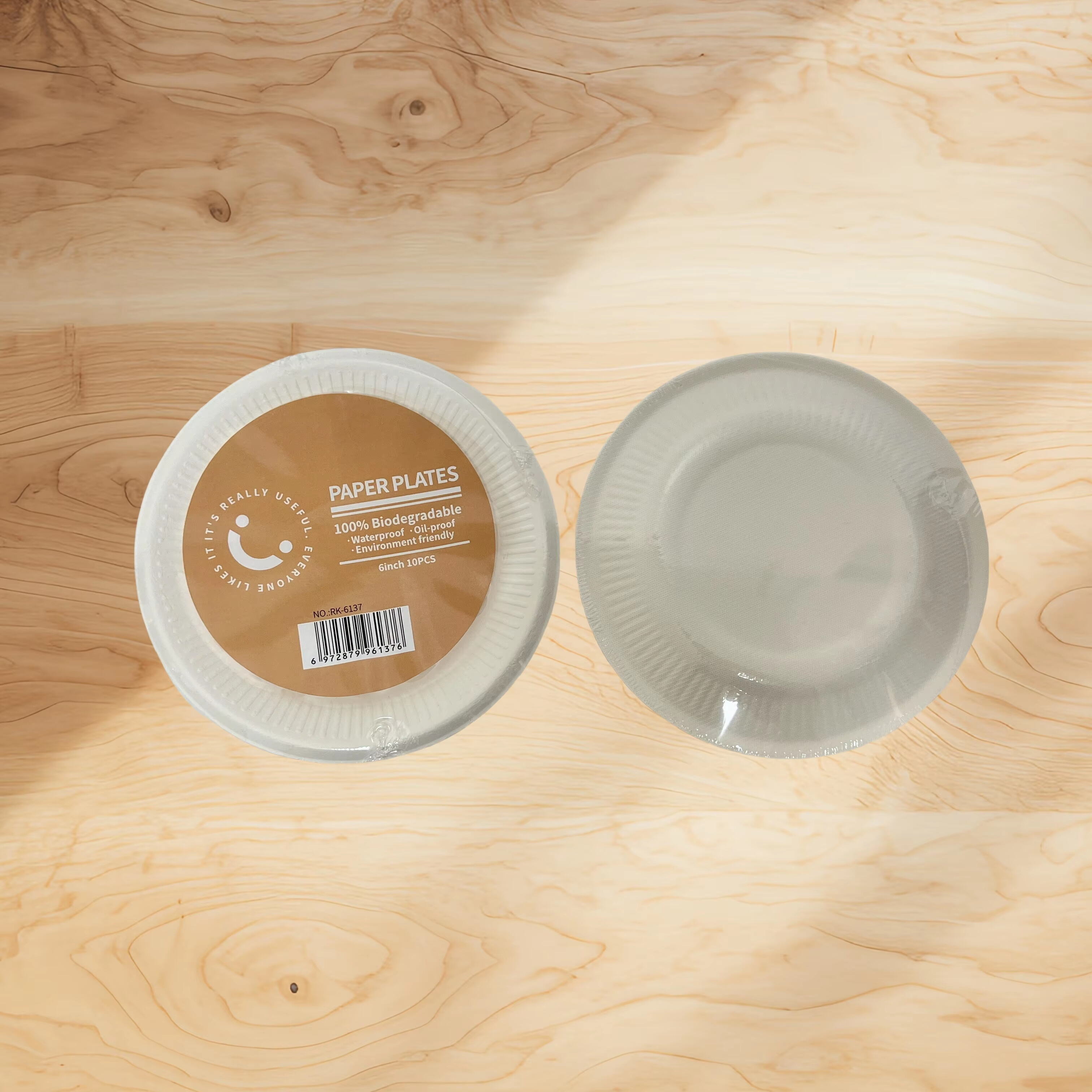Understanding the Environmental Cost of Single-Use Dinnerware
The debate over disposable plates and their environmental impact has become increasingly significant as our society grapples with sustainability challenges. From casual backyard barbecues to large corporate events, the choice between paper and plastic plates carries weight far beyond mere convenience. This comprehensive analysis explores the environmental implications of both options, helping conscious consumers make informed decisions that align with their ecological values.
The Life Cycle of Paper Plates
Manufacturing Process and Resource Consumption
Paper plate production begins in the forest, where trees are harvested and processed into pulp. The manufacturing process requires significant water usage and energy consumption. A single paper plate's production can consume up to 8 gallons of water and contribute to deforestation if the materials aren't sourced responsibly. However, many manufacturers now utilize sustainable forestry practices and recycled materials to minimize their environmental footprint.
The bleaching process used to create white paper plates adds another layer of environmental concern. Traditional chlorine bleaching methods release harmful dioxins into the environment, though many companies have switched to oxygen-based or chlorine-free bleaching alternatives to reduce their disposable plates environmental impact.
Biodegradability and Decomposition
One of paper plates' primary advantages is their biodegradability. Under optimal conditions, uncoated paper plates can decompose within 2-6 weeks. However, many paper plates receive a plastic or wax coating to improve durability and prevent leakage. These coatings significantly extend decomposition time and complicate the recycling process.
When paper plates end up in landfills, their decomposition process produces methane, a potent greenhouse gas. However, in commercial composting facilities, paper plates can break down efficiently and contribute to nutrient-rich soil production.

Examining Plastic Plate Environmental Effects
Production and Raw Materials
Plastic plates typically consist of polystyrene or polypropylene, petroleum-based materials with a substantial disposable plates environmental impact. The manufacturing process requires less water than paper production but consumes significant fossil fuel resources. Each pound of plastic produced generates approximately 3 pounds of carbon dioxide emissions.
Recent innovations in bioplastic technology offer promising alternatives, using renewable resources like corn starch or sugarcane. However, these materials currently represent a small fraction of the market and often come with their own environmental trade-offs.
Longevity and Disposal Challenges
Plastic plates can persist in the environment for hundreds of years without breaking down. While this durability makes them effective for their intended use, it creates significant environmental challenges. When improperly disposed of, plastic plates contribute to marine pollution and microplastic contamination.
Recycling plastic plates presents numerous challenges due to food contamination and varying plastic types. Many recycling facilities reject disposable plates, leading to increased landfill waste and environmental pollution.
Comparative Environmental Analysis
Carbon Footprint Assessment
Studies examining the disposable plates environmental impact reveal complex results. Paper plates generally have a higher carbon footprint during production but lower long-term environmental costs. Plastic plates produce fewer emissions during manufacturing but contribute more significantly to long-term pollution and ecosystem damage.
Transportation efficiency favors plastic plates due to their lighter weight and stackability, resulting in lower fuel consumption during distribution. However, this advantage becomes negligible when considering the full lifecycle environmental impact.
Waste Management Considerations
The environmental impact of both materials heavily depends on proper disposal methods. Paper plates in commercial composting facilities represent the most environmentally friendly end-of-life scenario. Plastic plates, when recycled, can reduce raw material demand, but recycling rates remain disappointingly low.
Innovations in waste management technology continue to evolve, with new methods for processing both materials more efficiently. However, the most sustainable solution often involves reducing overall disposable plate usage.
Making Environmentally Conscious Choices
Alternative Solutions and Innovations
The market increasingly offers eco-friendly alternatives to traditional disposable plates. Bamboo-based products, agricultural waste materials, and advanced biodegradable polymers present promising options with reduced disposable plates environmental impact. These innovations combine convenience with improved sustainability profiles.
Some manufacturers now produce hybrid products incorporating both paper and bioplastic elements, designed to maximize biodegradability while maintaining functionality. These developments demonstrate the industry's response to growing environmental concerns.
Best Practices for Consumers
When disposable plates are necessary, selecting uncoated paper products from sustainable sources represents the most environmentally conscious choice. For regular use, investing in reusable alternatives remains the most sustainable option. When using disposables, proper disposal through composting or recycling facilities maximizes environmental benefits.
Consider the specific use case when making selections. Short-term events with access to composting facilities might benefit from paper options, while situations requiring more durability might justify plastic use if proper recycling is available.
Frequently Asked Questions
Can paper plates be recycled with regular paper products?
Most paper plates cannot be recycled with regular paper products due to food contamination and protective coatings. However, uncoated and uncontaminated paper plates may be compostable in commercial facilities.
Are bioplastic plates better for the environment than traditional plastic?
Bioplastic plates generally have a lower environmental impact due to renewable resource use and improved biodegradability. However, they require specific industrial composting conditions to break down properly and may not decompose in home composting systems.
How long does it take for plastic plates to decompose in landfills?
Conventional plastic plates can take 500 years or more to decompose in landfills. During this time, they may break down into microplastics, which can contaminate soil and water systems, contributing to long-term environmental damage.
